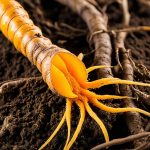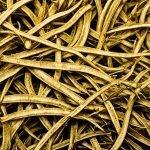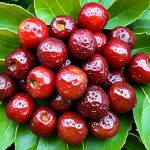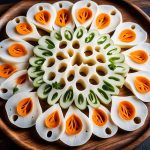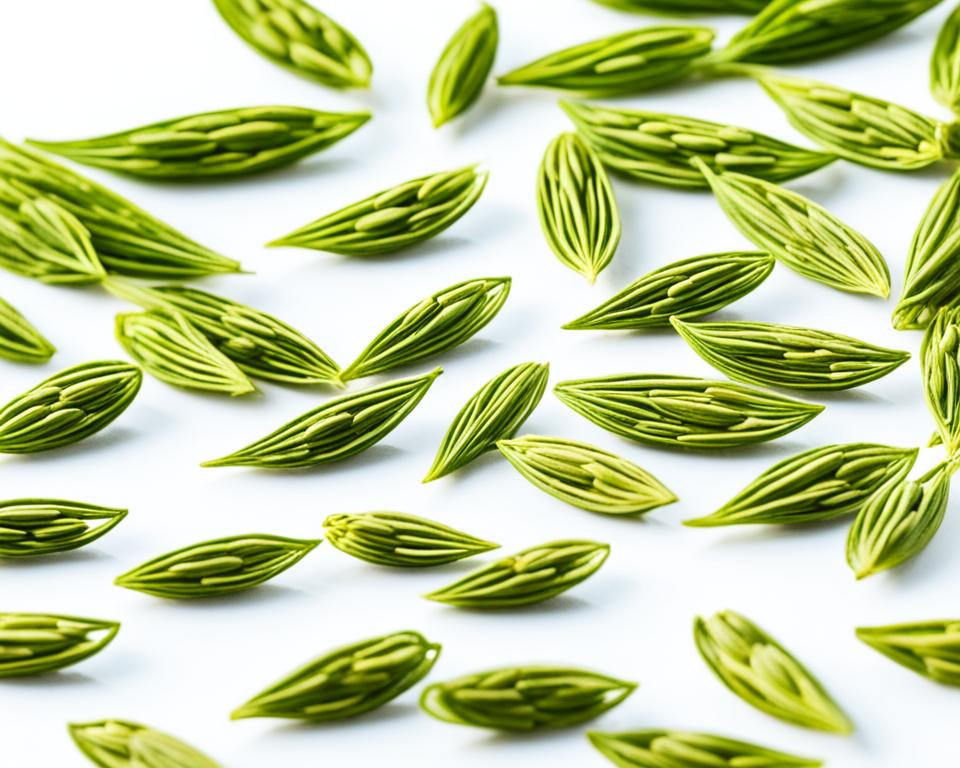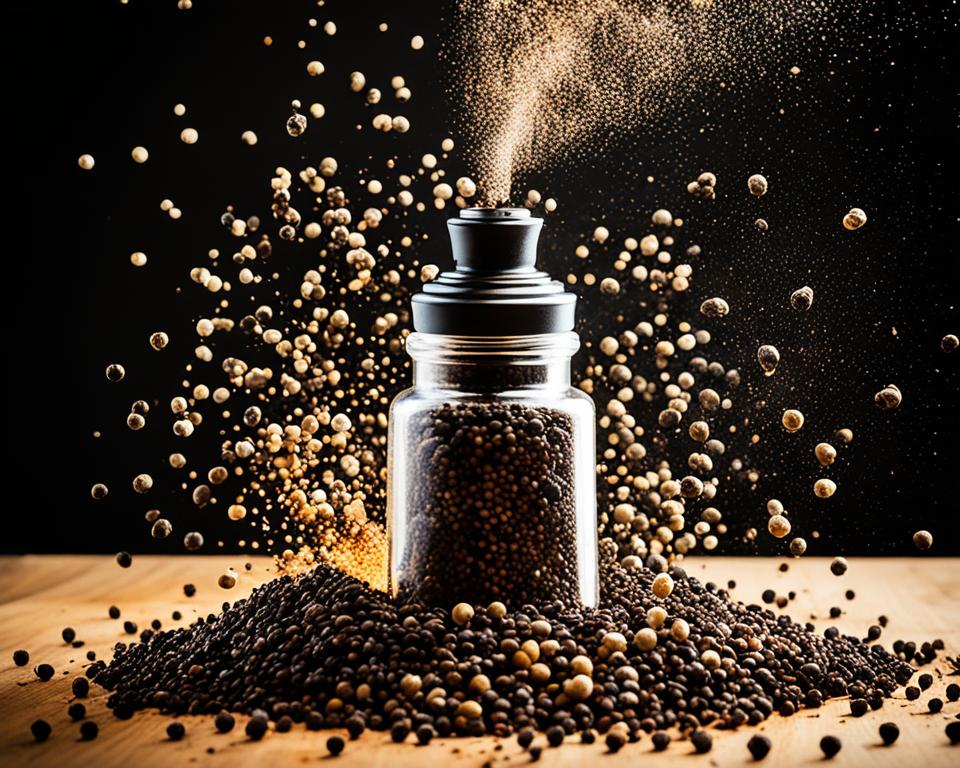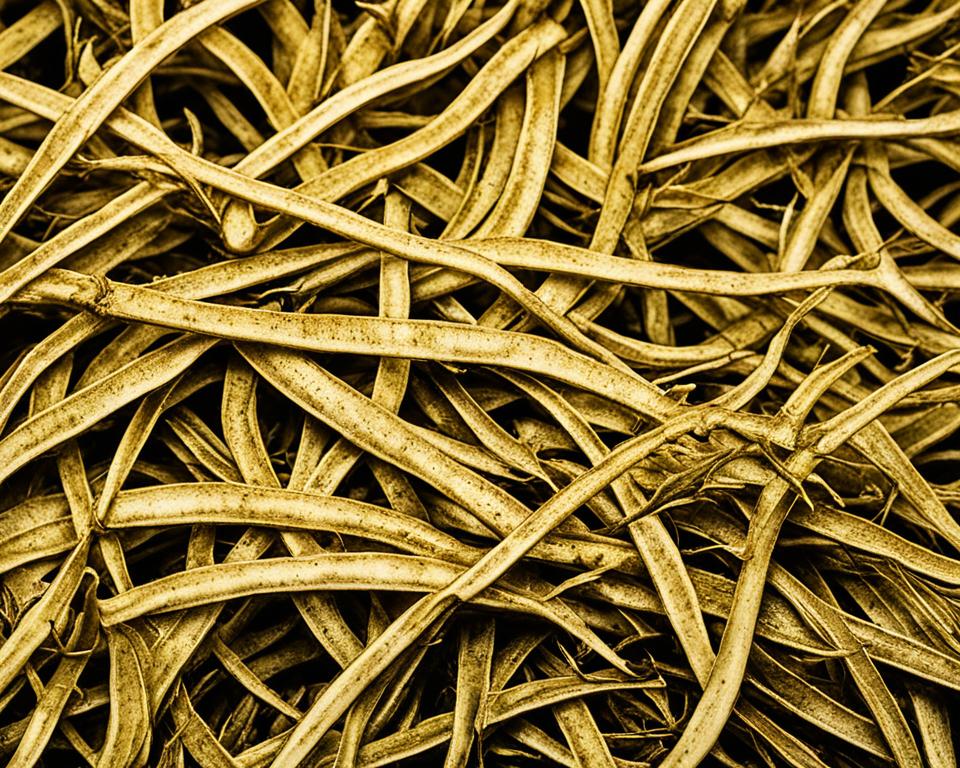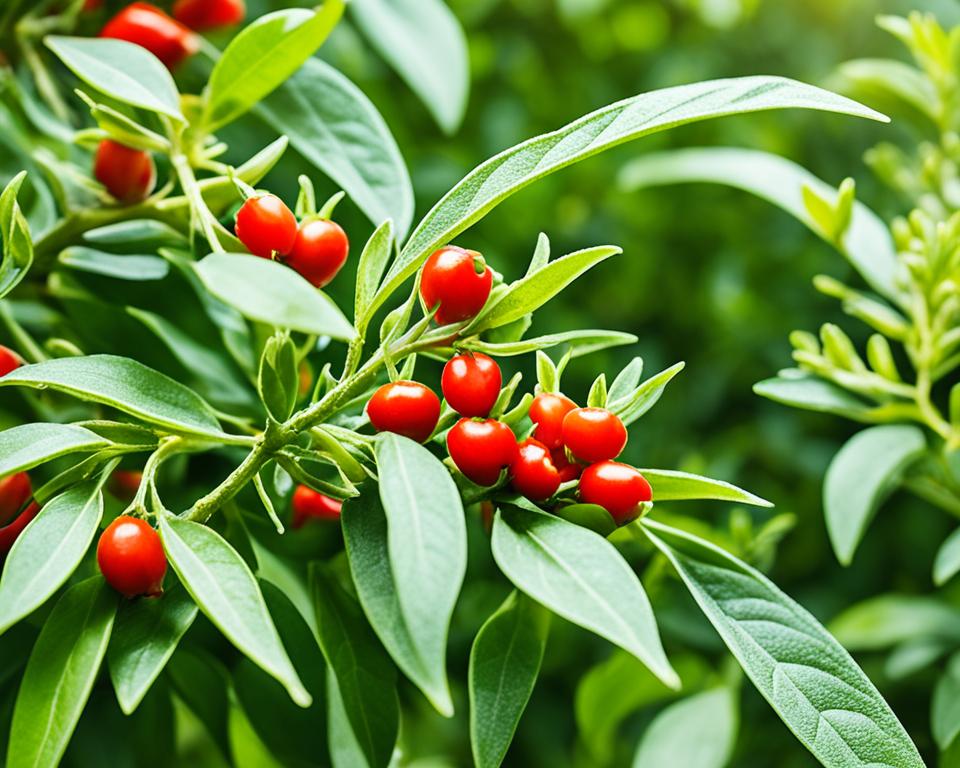Dill seed is known for its rich flavor and has been in use for many years. It comes from the Anethum graveolens plant, often called the dill plant. These tiny, oval herb seeds bring a special smell and taste to various foods. They are perfect for adding a fresh, citrus-like touch to dishes like pickles, breads, and seafood.
Read interesting things at : tosawakan
Key Takeaways
- Dill seed is a versatile and flavorful spice with a unique aroma and taste.
- Dill seed can enhance a wide variety of dishes, from pickles and breads to seafood and soups.
- Dill seed offers a distinctive, earthy-citrusy essence that can elevate the flavors of many savory recipes.
- Dill seed is derived from the Anethum graveolens plant, also known as the dill plant.
- Dill seed has been used for centuries in culinary traditions around the world.
Introduction to the Aromatic Dill Seed
The dill plant, Anethum graveolens, is from the Apiaceae family. It has been grown for thousands of years. It comes from the Mediterranean and parts of Asia. The dill plant has a wide history in culinary and medicinal uses. Its seeds are a key ingredient in many dishes. From pickles and breads to seafood and stews, these seeds bring a special flavor.
Origins and History of the Dill Plant
The dill plant, Anethum graveolens, likely started in the Mediterranean and Asia. People have used it for food and medicine for ages. Its small, feathery leaves and seeds are known for their unique flavor and smell. They’re a key part of many old recipes and dishes.
Culinary Uses of Dill Seeds Across Cultures
The culinary world has welcomed the dill plant‘s seeds with open arms. Eastern Europe uses them in pickles and breads. The Mediterranean flavors its seafood and stews with them. Whether as a seasoning or main ingredient, dill seeds are now a favorite herb.
Dill Seed Flavor Profile
Dill seeds have a unique taste that people often say is earthy, slightly sweet, and citrusy. Carvone and Limonene are in their oils, adding to their distinct smell and flavor. When cooking, dill seeds go great with spices and herbs like cumin, coriander, and caraway. They also mix well with onions, garlic, and many herbs.
Unique Aroma and Taste Characteristics
The dill seed aroma is like a blend of citrus and anise, with a bit of earthy undertone. Its taste is also unique, with sweet, peppery, and bitter flavors. These characteristics make dill seeds great for many cooking uses.
Complementary Spices and Herbs
It’s key to think about which spices and herbs work well with dill seeds. Beyond cumin, coriander, caraway, and fennel, they combine well with garlic, onions, and aromatic herbs like thyme and rosemary. Playing with different flavors can open up new uses for dill seed.
Nutritional Benefits of Dill Seeds
Dill seeds are more than just tasty in food. They also bring lots of nutritional benefits. These seeds are packed with vitamins like A, C, and E. They also have minerals such as calcium, iron, and magnesium.
These seeds also have oils and other things that might fight swelling and help digestion. Dill seed nutrition and dill seed health benefits mean they’re great for your diet. They’re an excellent way to get more dill seed vitamins and dill seed minerals each day.
| Nutrient | Amount per 1 Tbsp (5g) of Dill Seeds |
|---|---|
| Calories | 23 |
| Total Fat | 1.8g |
| Carbohydrates | 3.3g |
| Fiber | 1.9g |
| Protein | 1.1g |
| Vitamin A | 64 IU |
| Vitamin C | 2.5mg |
| Calcium | 47mg |
| Iron | 1.1mg |
| Magnesium | 17mg |
The dill seed nutrition info shows the surprising health power of these seeds. Using them in your meals can help your health and offer dill seed vitamins and dill seed minerals. These benefits might help with swelling and digestion.
Culinary Applications of Dill Seeds
Dill seeds are perfect for many cooking tasks. You can use them to pickle, bake, or season your dishes. They have a unique taste that works well in lots of recipes.
Pickling and Preserving with Dill Seeds
Dill seeds bring a special earthy-citrusy taste to pickled veggies and preserved foods like sauerkraut. They are a key part of traditional pickling. This makes them essential for that unmistakable flavor.
Dill Seed in Breads and Baked Goods
When used in breads and crackers, dill seeds offer a special taste and look. Their crunch and flavor make these baked goods stand out. They are great for both sweet and salty treats.
Dill Seed in Savory Dishes
Dill seeds also work well in many savory meals. They are good for meats, seafood, soups, and stews. Their taste deepens and adds complexity to these dishes.
Selecting and Storing Dill Seeds
Choosing between fresh and dried dill seeds can greatly affect your dishes. Fresh dill seeds are bright green and packed with a strong smell and taste. Dried dill seeds offer a less intense flavor.
Fresh vs. Dried Dill Seeds
For dishes like pickles or specific dips and sauces, fresh dill seeds work best. They add an earthy-citrusy kick, enhancing the dish. But, dried dill seeds are better suited for a variety of dishes. They blend nicely without dominating the taste.
Proper Storage Techniques
Knowing how to store dill seeds is key to keeping their taste fresh. Keep them in an airtight container, out of sunlight, heat, and moisture. A cool, dark spot in your pantry is perfect.
Using the right storage, your dill seeds can stay fresh for weeks or months. This way, your dishes can always have that special dill taste.
Growing Your Own Dill Plant
Interested in always having fresh dill seeds? You should grow your own dill plant. Dill loves to grow in soil that drains well. It needs plenty of sunlight. Whether it’s an annual or biennial plant depends on the climate.
Climate and Soil Requirements
Dill plants do best in sunny places with good drainage. They like soil that’s mostly loam and full of nutrients. The soil’s pH level should be between 6.0 and 7.5. During the growing season, it’s important to keep your dill plants moist but not waterlogged.
Harvesting and Drying Dill Seeds
When it’s time to harvest the dill seeds, wait for the dill plant to flower. Let the seed heads fully mature before cutting them. This usually happens in the summer, as the season wanes. After cutting, dry the seeds in an area with good air flow. Dill seeds need to be totally dry before you store them. This way, you can keep them for cooking later.
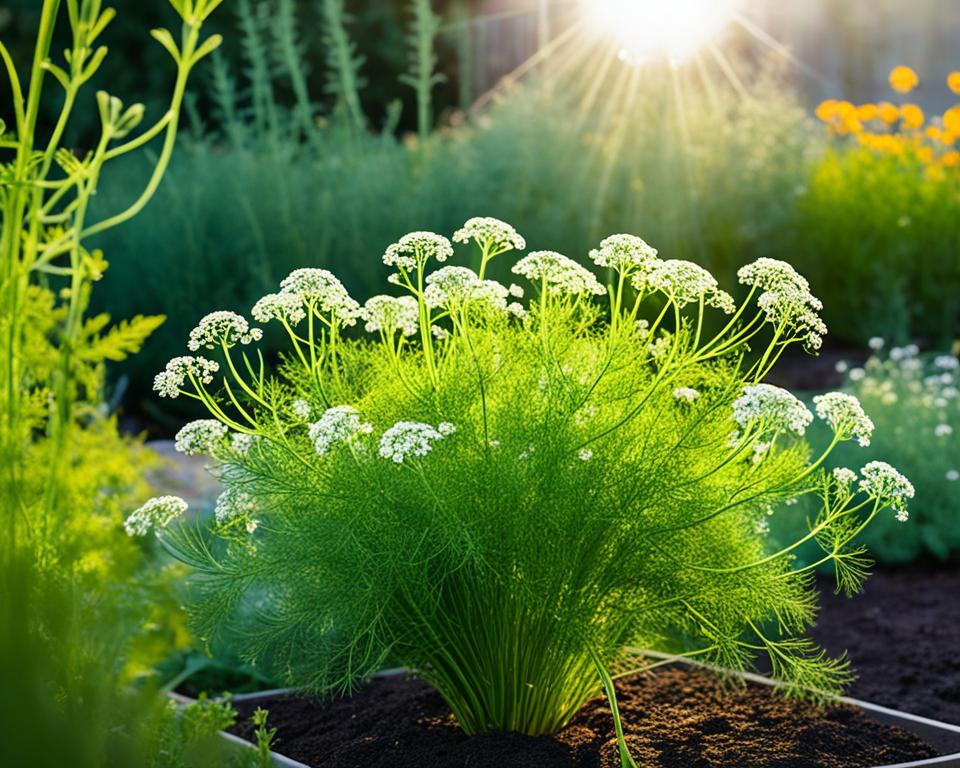
Dill Seed in Traditional Remedies
Besides being used in food, dill seeds have been in traditional medicine for ages. They are thought to help with digestion, lower inflammation, and boost heart health.
More research is needed to prove these benefits. Yet, exploring dill seeds in your diet or as home remedies is a good idea. Many cultures have appreciated dill seeds for easing digestion troubles and reducing swelling.
Dill seeds offer more than just great taste. They provide health benefits too. Exploring their traditional medicinal uses can add to our lives today. They may improve our health in many ways.
Dill Seed in Global Cuisines
Dill seeds are used in many cuisines worldwide, showing their diverse uses. They bring unique flavors to dishes in Indian cuisine and the Mediterranean region. These small seeds play a big role in the different flavors of food globally.
Indian Culinary Traditions with Dill Seeds
In Indian cuisine, dill seeds are well-loved. They give curries a special earthy-citrus flavor. Dill seeds are also important in pickles and chutneys. They add a unique taste that goes well with these tangy foods.
Dill Seed in Mediterranean Cooking
The Mediterranean region also values dill seeds. In its sunny cuisines, dill seeds are used in marinades, sauces, and baked goods. They enhance the taste of seafood, breads, and local dishes. Dill seeds are a special part of the region’s flavorful cooking.
Dill Seed Substitutes and Alternatives
Dill seeds bring a special flavor to dishes. Yet, you might need a dill seed substitute at times. Seeds like fennel, caraway, or cumin can be good stand-ins as they share similar tones. Dill weed, the plant’s leafy part, is another option. It provides a different taste but works well in some dishes.
Consider the dish’s flavor and texture when picking a dill seed substitute. This will help the dish taste just right.
| Dill Seed Substitute | Flavor Characteristics | Best Uses |
|---|---|---|
| Fennel Seeds | Licorice-like, sweet, and aromatic | Pickling, breads, savory dishes |
| Caraway Seeds | Earthy, slightly nutty, and slightly sweet | Sauerkraut, rye breads, stews |
| Cumin Seeds | Warm, earthy, and slightly bitter | Curries, chili, roasted vegetables |
| Dried Dill Weed | Grassy, slightly sweet, and slightly bitter | Salads, dips, fish dishes |
Using a dill seed substitute, you’ll need to adjust the amount. This makes up for different tastes. Trying various mixes can lead you to a great dill seed alternative for your dish.
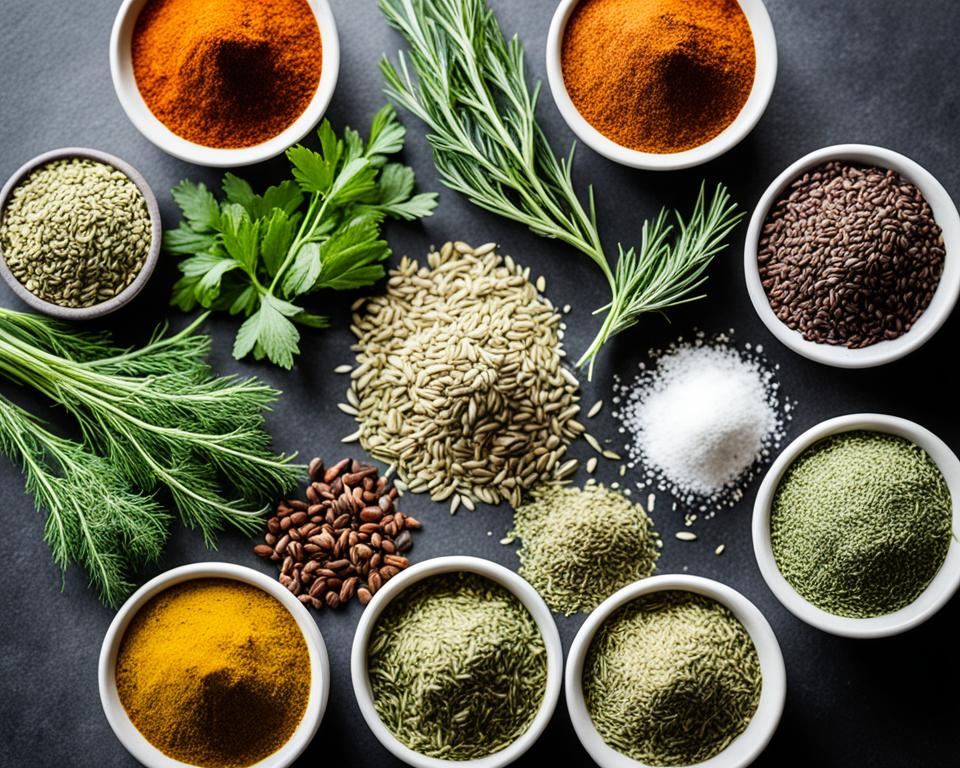
Pairing Dill Seeds with Other Herbs and Spices
Dill seeds go well with many herbs and spices. They create tasty and balanced flavors. Aside from what we know already, like cumin, coriander, and caraway, dill seeds mix well with garlic, onion, mustard, and herbs such as thyme and rosemary. Experimenting with different combinations will help you find new ways to use dill seeds in cooking.
Here’s a table to help you see how to mix dill seeds with other flavors:
| Herb or Spice | Flavor Profile | Culinary Pairing |
|---|---|---|
| Cumin | Earthy, warm, slightly nutty | Curries, stews, grilled meats |
| Coriander | Citrusy, floral, slightly sweet | Marinades, dressings, baked goods |
| Caraway | Slightly licorice-like, nutty | Sauerkraut, rye bread, roasted vegetables |
| Garlic | Pungent, savory, umami | Soups, sauces, roasted meats |
| Onion | Sweet, aromatic, slightly sulfurous | Pickles, stews, sautéed dishes |
| Mustard | Pungent, slightly bitter, spicy | Vinaigrettes, marinades, condiments |
| Thyme | Earthy, minty, slightly woodsy | Roasted vegetables, poultry, fish |
| Rosemary | Piney, woody, slightly citrusy | Grilled meats, roasted potatoes, breads |
| Parsley | Fresh, slightly grassy, bright | Salads, sauces, garnishes |
Knowing these dill seed flavor pairings opens up many new dishes. Experimenting with herbs and spices can lead to exciting recipes for both home cooks and chefs.
Creative Recipes Featuring Dill Seeds
Dill seeds add great flavor to many dishes. You can use them in a
Dill Seed Compound Butter
. This butter can go on bread, in sautéed veggies, or on grilled meats. They are a great spice for homemade pickles,
Dill Seed Pickled Vegetables
, adding a unique flavor. They’re also perfect for a tasty
Dill Seed Crusted Fish or Meat
Conclusion
Dill seed is noted for its versatility and great taste. It has been used in cooking worldwide for ages. Dishes with dill seeds vary from pickles and bread to seafood.
This spice stands out with an earthy-citrusy flavor. It doesn’t only taste good but also brings possible health benefits. These seeds are a treasure in the kitchen.
Chefs love dill seeds because they offer so much. They can add them to old recipes or try something new. Dill seeds give endless chances to be creative with food.
Dill seed is more than a normal spice. It brings a lot to the taste of many foods. Knowing how to use dill seeds well can make meals better. It makes dining a special experience.
